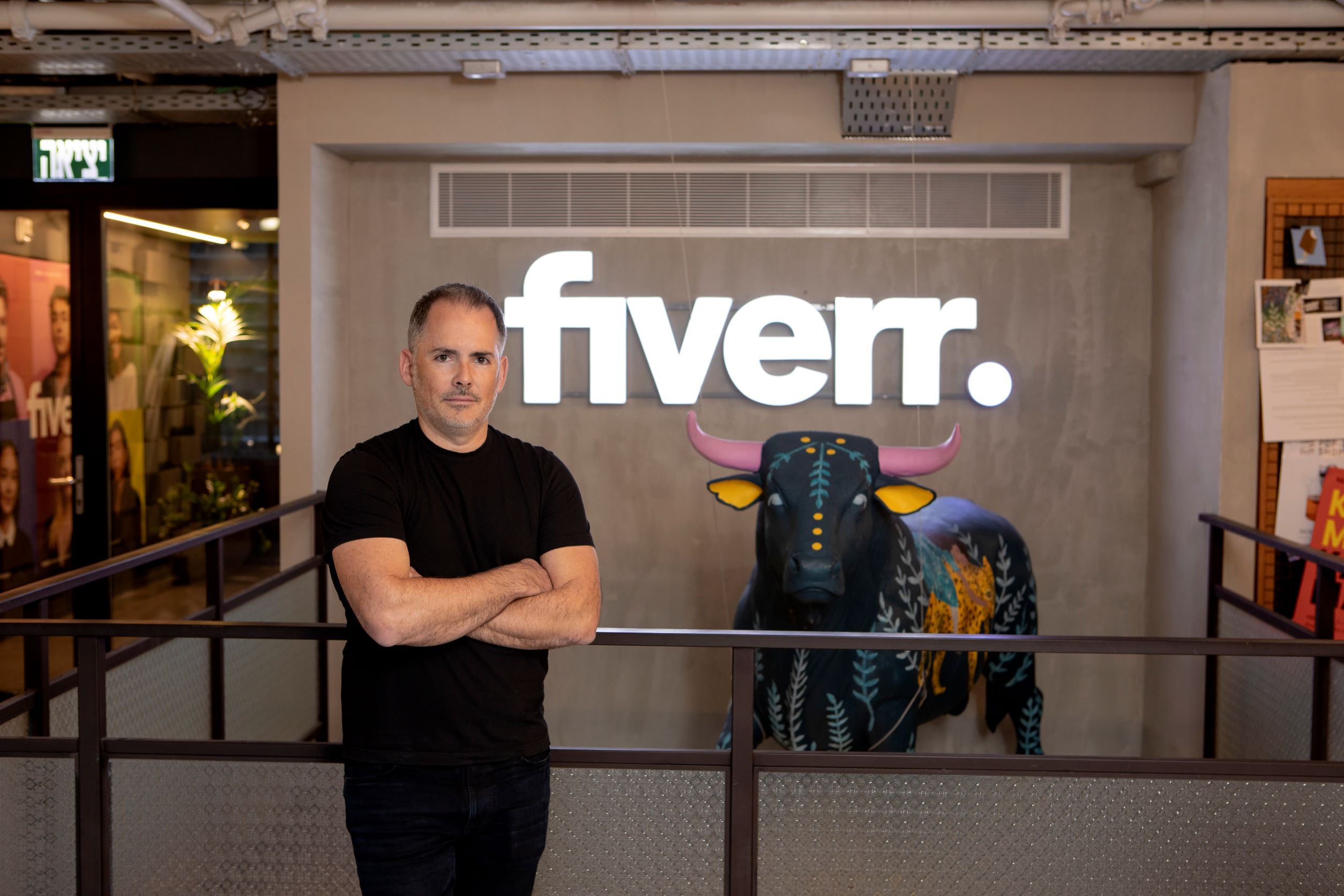Fiverr is a dynamic online marketplace that has transformed the way freelancers offer their services and clients find talent. Founded in 2010, this platform connects millions of people around the globe, allowing them to buy and sell digital services including graphic design, writing, programming, and more. The unique value proposition of Fiverr is that it allows freelancers to showcase their talents through "gigs," each starting at just $5. This accessible price point makes it an appealing option for both service providers and buyers.
Imagine having access to a global network of skilled professionals at your fingertips; that’s what Fiverr offers. From budding entrepreneurs to established companies, users can find a diverse range of services tailored to their needs. The platform's interface is user-friendly, making navigation seamless. With a rating system and reviews, buyers are empowered to make informed decisions while freelancers can build their credibility.
But Fiverr is more than just a website; it’s a community. It fosters connections among creatives and professionals, enabling collaboration that transcends geographic boundaries. As the gig economy continues to grow, Fiverr stands at the forefront of this revolution, advocating for flexibility and creativity in how work is conducted.
2. The Founding Story

The story of Fiverr’s inception is as inspiring as it is fascinating. Founded by Micha Kaufman and Shai Wininger in 2010, Fiverr started with the simple idea to create a platform where people could offer their services for just $5. Kaufman and Wininger recognized a gap in the market for affordable freelance services and decided to fill it with what they aptly named "Fiverr." With a vision to democratize access to skills and services, they set out to build a website that would empower both freelancers and clients.
Initially, the journey was not easy. The duo faced the common challenges of startup life, including attracting users and gaining traction in a competitive landscape. According to Kaufman, the idea was born from a personal frustration; he needed a quick and affordable service that was hard to find. This sentiment resonated with many others, providing the groundwork for Fiverr’s growth.
- 2009 – Idea conception during a brainstorming session.
- 2010 – Fiverr officially launched.
- 2012 – Secured $15 million in funding, enabling rapid expansion.
- 2014 – Platforms like Fiverr gained massive recognition, leading to improved features.
- 2020 – Launched Fiverr Business, catering to larger teams and companies.
The concept of equivalently priced gigs quickly gained traction, capturing a niche market where budget-conscious businesses could access professional services without breaking the bank. Feedback loops from early users helped refine the platform, influencing design and operational efficiency. As Fiverr flourished, it became a key player in the gig economy, successfully carving its niche as a reliable platform for both freelancers and clients alike.
Also Read This: What is a Post Request on Fiverr?
3. Business Model and Unique Value Proposition

Fiverr's business model is quite fascinating and serves as a cornerstone for its success. At its core, Fiverr operates as a *marketplace where freelancers (or "sellers") offer a variety of services, known as "gigs," to customers (or "buyers"). The platform covers a broad spectrum of categories, from graphic design and writing to programming and marketing, essentially catering to a wide audience.
What truly sets Fiverr apart is its unique value proposition. Here are a few key aspects:
- Affordable Pricing: Fiverr started with a model where most services were priced at just $5. This was attractive for buyers looking for budget-friendly options.
- Accessibility: The platform allows anyone to become a seller, enabling freelancers to earn money from their skills, regardless of their geographical location.
- Diverse Service Offerings: With categories ranging from writing to music composition, Fiverr is a one-stop-shop for varied digital needs.
- User Reviews and Ratings: Fiverr emphasizes transparency, allowing buyers to make informed decisions based on previous client feedback.
This model not only helps freelancers monetize their talents but also empowers buyers to access affordable services quickly. The blend of affordability, user-friendliness, and a broad range of services has helped Fiverr carve a niche in the competitive landscape of freelance marketplaces.
Also Read This: Does Twitter Not Let Fiverr Work Now?
4. Early Growth Strategies

In its early days, Fiverr employed a variety of growth strategies that propelled it to success. One of the most effective methods was leveraging word-of-mouth marketing. Users who had positive experiences often shared their gigs with friends and family, creating a ripple effect that drove new users to the platform.
Another key strategy was incentivizing sellers. Fiverr encouraged high-quality work by providing bonuses to sellers who received positive reviews and completed multiple orders. This helped cultivate a community of reliable freelancers passionate about delivering quality service.
To boost visibility, Fiverr also focused on search engine optimization (SEO). By optimizing their platform for relevant keywords, they attracted organic traffic, making it easier for potential users to discover their service. Furthermore, Fiverr capitalized on social media marketing*, using platforms like Facebook and Twitter to engage with users and promote successful projects and testimonials, which built credibility.
| Growth Strategy | Description |
|---|---|
| Word-of-Mouth | Users sharing their positive experiences with friends and family. |
| Seller Incentives | Bonus for positive reviews and frequent orders to encourage quality. |
| SEO | Optimizing the website for relevant keywords to attract organic traffic. |
| Social Media Marketing | Engaging users through platforms like Facebook and Twitter to showcase success stories. |
These early strategies created a solid foundation, allowing Fiverr to scale rapidly and establish a presence in the freelancing market.
Also Read This: What Are the Most Profitable Fiverr Gigs?
Key Partnerships and Collaborations
Fiverr's journey to success is laden with strategic partnerships and collaborations that significantly contributed to its remarkable growth. By joining forces with other companies and organizations, Fiverr enhanced its service offerings, expanded its reach, and positioned itself as a leader in the freelance marketplace.
One of the notable collaborations includes partnerships with educational institutions. These alliances have allowed Fiverr to tap into a pool of upcoming talent, providing students with practical experience while offering its clients access to fresh, innovative ideas. Collaborations like these not only provide students with valuable exposure but also foster a community of young freelancers who may become lifelong users of the platform.
Additionally, Fiverr has collaborated with various tech firms to improve its functionality and user experience. For example, partnerships with payment processors like PayPal and Stripe made transactions smoother for both buyers and sellers. This focus on usability has significantly improved customer satisfaction and retention.
Another key aspect of Fiverr’s success lies in its strategic alliances with marketing and advertising agencies. These partnerships have helped Fiverr promote its services more effectively and reach broader audiences. By leveraging the expertise of established firms in the marketing sphere, Fiverr has been able to elevate its brand presence and widen its user base.
Moreover, partnerships with influencers and industry leaders have helped Fiverr build credibility. When recognized figures advocate for Fiverr, potential users are more likely to trust the platform, leading to increased sign-ups and active users.
To sum it up, Fiverr's success can largely be attributed to its ability to forge meaningful partnerships that enhance its service delivery and expand its presence in the freelance market.
Also Read This: How to Get Receipts from Fiverr
Leveraging Technology and Innovation
In today’s digital age, technology and innovation play crucial roles in defining a company’s success. For Fiverr, embracing these elements has been a game-changer in its growth trajectory. From its inception, Fiverr has prioritized the integration of advanced technology to refine the user experience and streamline operations.
One of the critical innovations Fiverr implemented is its intuitive interface. By focusing on a user-friendly design, the platform makes it easy for freelancers and buyers to navigate through services, making connections, and sealing deals. The simplicity reduces barriers and encourages participation from users of all tech-savviness levels.
Fiverr continually invests in AI and machine learning to enhance its service offerings. Through algorithms that analyze user behavior, Fiverr can recommend gigs and freelancers tailored to users' needs, thereby increasing engagement. This personalized experience not only helps buyers find what they’re looking for quickly but also aids sellers in reaching their target audience more effectively.
Moreover, Fiverr’s adoption of data analytics has enabled the platform to better understand market trends and customer preferences. By translating this data into actionable insights, Fiverr ensures that it remains competitive and relevant in a constantly shifting freelance landscape.
| Technology/Innovation | Impact |
|---|---|
| User Interface | Enhances user experience and engagement. |
| AI & Machine Learning | Personalizes recommendations, increasing conversion rates. |
| Data Analytics | Informs strategy based on current market trends. |
Lastly, Fiverr’s infrastructure is built to scale. By utilizing cloud services, the platform can handle a growing number of users and transactions without compromising its performance. This scalability allows Fiverr to expand its international presence quickly and efficiently, making it a truly global platform.
In essence, Fiverr's strategic focus on leveraging technology and constant innovation has positioned it as a forward-thinking player in the freelance space, securing its success in a competitive market.
Also Read This: How to Become a Digital Marketing Freelancer
7. Expanding Services and Offerings
When Fiverr first burst onto the scene in 2010, it revolutionized the freelance marketplace by allowing users to buy and sell services starting at just $5. However, as the platform grew, it quickly became evident that diversifying its offerings would be key to attracting a wider array of users. And that's exactly what they did!
The company began by expanding beyond basic services like graphic design and writing into more specialized areas, including:
- Video Production
- Music & Audio
- Digital Marketing
- Programming & Tech
This expansion not only provided freelancers with more opportunities to showcase their talents but also catered to businesses seeking versatile solutions for their projects. Moreover, Fiverr introduced tiers to its services, allowing sellers to offer packages at various price points. This encouraged buyers to opt for higher-level services. Here’s a quick breakdown of their service tiers:
| Service Tier | Description |
|---|---|
| Basic | Standard service with essential features. |
| Standard | Includes additional features or faster delivery. |
| Premium | Top-tier service with all features and priority support. |
This strategic expansion solidified Fiverr's reputation as a comprehensive platform for freelancers and clients alike, fostering a thriving marketplace where innovative services flourish.
Also Read This: How to Make Promos on Fiverr
8. Marketing and Branding Efforts
Fiverr's journey to success isn't just about expanding services; marketing and branding have played colossal roles as well. From the get-go, Fiverr embraced creative marketing strategies to establish its identity within the crowded freelancing space.
One of the standout tactics was their clever use of social media. Fiverr harnessed platforms like Instagram, Facebook, and Twitter to showcase successful projects and testimonials from satisfied clients and talented freelancers. This not only helped build credibility but also created a vibrant community. Their campaigns often featured:
- Engaging visual content
- Success stories from freelancers
- Value-driven blog posts and articles
Another key aspect was the branding itself. Fiverr adopted a fun and relatable tone in its messaging, making it approachable for both sellers and buyers. They didn't shy away from using humor, which resonated with a broad audience, particularly millennials and Gen Z. This friendly brand voice helped demystify the often-intimidating world of freelance work.
Moreover, Fiverr invested in targeted ads that reached potential customers who were searching for freelance services or who displayed interests aligned with Fiverr’s offerings. These ads were often persuasive, highlighting:
- The diverse range of services
- Ease of use
- Affordability
By consistently showcasing its unique value proposition, Fiverr positioned itself as not merely a service marketplace but a community where creativity meets opportunity—an inviting haven for freelancers and businesses to thrive together.
Also Read This: Can You Transfer Balance on Fiverr?
User Experience and Community Engagement
When it comes to platforms like Fiverr, user experience is everything. Imagine you’re stepping into a vibrant marketplace, packed with myriad choices but designed in a way that it feels inviting and easy to navigate. That's precisely what Fiverr aimed to create from the get-go.
Fiverr has invested heavily in ensuring that its platform is user-friendly. The interface is clean, intuitive, and allows both buyers and sellers to connect seamlessly. With features like advanced search filters, categorized listings, and user-friendly dashboards, users can quickly find exactly what they need, whether it’s graphic design, writing, or programming services.
Another critical factor in Fiverr’s growth is its focus on community engagement. Fiverr has cultivated a thriving ecosystem where freelancers and clients can connect, share experiences, and learn from each other. Here are some ways Fiverr enhances community engagement:
- Forums and Social Media: Fiverr has established active forums and social media channels where users can share tips, experiences, and support one another.
- Resource Sharing: The platform frequently shares articles, webinars, and tutorials to help freelancers hone their skills and succeed in their endeavors.
- Feedback Mechanism: Fiverr encourages users to leave reviews and feedback, promoting a culture of transparency and improvement.
By creating an engaging environment and optimizing the user experience, Fiverr not only attracts new users but also retains them, solidifying its place in the gig economy.
Also Read This: How to Retrieve Your Fiverr Order: A Step-by-Step Guide
Challenges Faced During Growth
Every success story has its bumps along the road, and Fiverr is no exception. As it soared in popularity, several challenges emerged that tested its resilience and adaptability.
One of the primary challenges was managing quality control. With thousands of freelancers offering services, ensuring that only high-quality gigs made it to the front page was crucial. While Fiverr implemented rating systems and reviews, there were times when subpar services slipped through the cracks, leading to customer dissatisfaction. This prompted Fiverr to invest in more comprehensive vetting processes for its sellers.
Additionally, the platform faced operational pressures. As traffic and demand surged, the technical infrastructure needed to keep up. Fiverr had to scale its technology rapidly, ensuring it could handle increased traffic while maintaining a smooth user experience. This often meant investing heavily in both technology and human resources.
Moreover, competition in the freelancing space intensified. New platforms emerged, luring away freelancers and clients with attractive features and pricing models. Fiverr had to continuously innovate, devising new tools and strategies to remain compelling and relevant.
To tackle these challenges, Fiverr embraced a philosophy of continuous improvement. Through user feedback and market analysis, they adjusted their strategies, leading to new and enhanced features that kept users engaged. Through perseverance, Fiverr has successfully navigated its growth journey, emerging even stronger each time.
Also Read This: Fiverr for Writers: How to Find Work and Build Your Client Base
The Impact of Global Events on Fiverr's Growth
When you think about Fiverr's growth, it’s essential to consider how global events have shaped its trajectory. From economic downturns to a pandemic, these events have triggered shifts in how people work and engage with freelance platforms. Let's delve into some of the significant global incidents and their implications for Fiverr.
- The 2008 Financial Crisis: This significant event made companies rethink their staffing strategies. Many turned to freelancers to save costs, leading to a surge in demand for Fiverr's services.
- COVID-19 Pandemic: The pandemic transformed remote work from a trend to a norm. Many professionals lost jobs and turned to freelancing as a means of income. Fiverr capitalized on this shift by promoting its platform as a solution for both freelancers and small businesses.
- Remote Work Culture: With global events emphasizing the need for remote work, companies realize that talent isn’t bound by geographical limitations. This vision aligns perfectly with Fiverr’s framework, enabling the platform to flourish further.
Fiverr not only saw an increase in users but also expanded its offerings to cater to a more diverse range of services—from graphic design to digital marketing. As the world evolves, so does Fiverr, continually adapting to meet the changing needs of freelancers and businesses alike.
Also Read This: What is a Level 2 Seller on Fiverr?
Future Outlook: What's Next for Fiverr?
As we gaze into the crystal ball, Fiverr's future appears promising but not without challenges. The gig economy is constantly evolving, and Fiverr is keen on staying ahead of the game. Here’s what lies ahead for this trailblazing platform:
| Future Strategy | Details |
|---|---|
| Expansion of Services | Fiverr may continue to diversify its range of services, allowing freelancers to offer niche skills and making it easier for clients to find what they need. |
| Enhanced User Experience | Continual improvements in UX/UI design will likely keep user satisfaction high. Features like better search capabilities and smoother payment processes are anticipated. |
| Global Market Penetration | With an emphasis on globalization, Fiverr aims to target emerging markets, expanding its reach and user base. |
| Adapting to Technology Trends | Keeping abreast of technology like AI and automation, Fiverr is likely to leverage these advancements to optimize service offerings. |
In summary, as Fiverr evolves, it will continue to adapt to the changing gig economy landscape, providing invaluable resources for both freelancers and clients. The journey of success isn't ending; it's merely entering a new chapter!
How Did Fiverr Grow: A Journey of Success
Fiverr, the online platform that connects freelancers with businesses, has undergone a remarkable journey since its inception in 2010. Founded by Micha Kaufman and Shai Wininger, Fiverr aimed to revolutionize the way people buy and sell services online. Here’s a closer look at the key factors contributing to Fiverr's impressive growth:
- Innovative Business Model: Fiverr introduced a unique marketplace where services (“gigs”) could be purchased starting at just $5. This model opened up opportunities for both freelancers and customers, encouraging widespread participation.
- Diverse Range of Services: The platform hosts a vast array of services across various categories, including graphic design, writing, programming, marketing, and video editing. This diversity attracts a larger pool of users.
- User-Friendly Interface: Fiverr’s simple and intuitive interface makes it easy for anyone to navigate the platform, whether they are buyers or sellers. This accessibility has been beneficial in attracting users.
- Global Reach: By allowing freelancers from all around the world to offer their services, Fiverr has tapped into a global market. This has significantly increased the number of available gigs.
- Marketing and Branding Strategies: Fiverr has invested heavily in marketing campaigns that have elevated its brand visibility, including social media ads and collaborations with influencers.
Moreover, Fiverr has continually adapted to the evolving market demands by introducing features such as Fiverr Pro for premium services, and Fiverr Learn for educational courses. These innovations help maintain user engagement and satisfaction.
In conclusion, Fiverr’s journey from a simple freelance marketplace to a global leader is a testament to its innovative approach, diverse offerings, and effective marketing strategies. By focusing on user experience and continuous adaptation, Fiverr has crafted a success story that continues to inspire freelancers and businesses alike.



